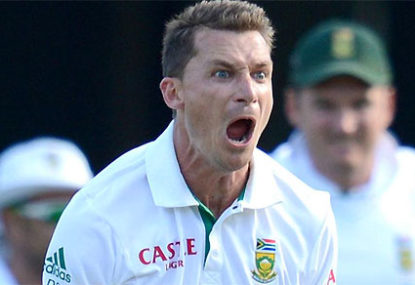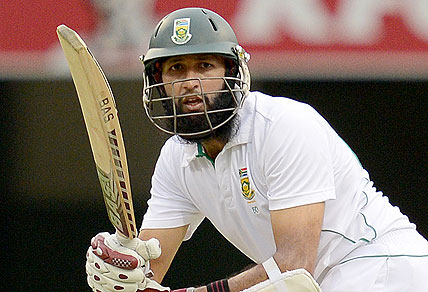Australia battle through slow start, rain delay to clinch ODI series
Australia have sealed victory in the best-of-three one-day international series against South Africa, avenging their upset loss in match two with a rain-affected 110-run…

With the opening Test match of the Australian summer less than a week away, there has been much public speculation over the team the hosts will take to the WACA.
But perhaps a more interesting question than “Who plays: Mennie or Siddle?” or “Is it fair that Jackson Bird misses out on a Test match because of his secondary skill?” is a far simpler one, and with a far less simple answer.
“Who are South Africa going to pick for the first Test?”
The Proteas aren’t the all-conquering side they have been in previous Test tours of Australia, in 2008-09 and 2012-13.
Gone are the likes of Graeme Smith, Jacques Kallis and Alviro Petersen, who struck fear into Australian hearts every time they walked out to bat. (Well, maybe not Petersen, but you know what I mean.)
Even AB de Villiers won’t be around, unless he miraculously becomes fit for the day-night Test in Adelaide.
In their place are not only a generation of relative unknowns like young quick Kagiso Rabada, young batsman Temba Bavuma and spinner Tabraiz Shamsi (that last guy I’d never even heard of up until last Monday), but a newly implemented transformation policy that will inevitably play a big role at selection.
The policy means the Proteas are obliged to pick, on average, at least six non-white players in every international fixture. Given the makeup of the Proteas’ touring squad, things could get very interesting.
Why? Well, South Africa have only included seven non-white players in their squad: the majestic Hashim Amla, an injury-plagued Vernon Philander, a plucky but sporadic all-rounder in JP Duminy, the above three youngsters, and another spin-bowling all-rounder named Keshav Maharaj.
The transformation policy indicates that six of those seven must play at the WACA, unless the Proteas choose to play both Maharaj and Shamsi at either Hobart or Adelaide – unlikely given both South Africa’s historic disposal towards pace bowlers, and the existence of a couple of part-time spinning options in Dean Elgar and Duminy in the team.
But aside from this situation, the quotas mean at least one of them must be in the team at all times- including at the historically pace-friendly WACA.
So which of Maharaj and Shamsi makes their debut in Perth? The answer could well depend on how the rest of the team lines up.
Hashim Amla is a lock at number three, and the transformation policy means the two black Africans on the tour – Temba Bavuma and Kagiso Rabada – are equally assured of their place (and their form makes them certainties even with the quota system in place).

Faf du Plessis is an interesting one. As acting captain in the absence of de Villiers, he is assured of his place at number four for at least the first two Tests, but transformation could see him make way for de Villiers if he makes a surprise comeback for the Adelaide Test – even if his form is outstanding.
As the resident fifth bowling option in the side, JP Duminy would likewise be safe in the side even disregarding the quotas that make his inclusion all but mandatory. The same goes for Vernon Philander, who has struggled with injury ever since the 2015 World Cup, but whose presence in the team instantly makes South Africa more intimidating.
Quinton de Kock is perhaps the most interesting player of all. He should take the gloves over backup Dane Vilas, but his versatility – he can either bat at seven, the traditional domain of the wicketkeeper-batsman, or open the batting – opens up a lot of doors at selection time for the Proteas.
One such is this: de Kock opens with Dean Elgar, then Maharaj – who has two centuries at first-class level – bats at seven, allowing the Proteas to pick Philander, the electric Dale Steyn, Rabada, and Morne Morkel, whose height could play a big part at the WACA.
This side satisfies all the quotas, and gives the Proteas a balanced and powerful bowling attack, but it greatly weakens the structure of their batting line-up.
The second option is this. De Kock bats at seven, Elgar opens with the out of form Stephen Cook, and the unfortunate Morkel- who, despite having not played a Test since January, is perfectly suited to the pace and bounce typical of the WACA pitch – misses out for one of Maharaj and Shamsi.
Again, this combination satisfies the transformation policy, but begs the question: is it better for the Proteas to expose a debutant spinner to a notoriously tough assignment in Perth, or one of the best fast bowlers in the world with the conditions likely in his favour?
The answer to that for the First Test, and indeed for the other two as well, makes for interesting viewing.